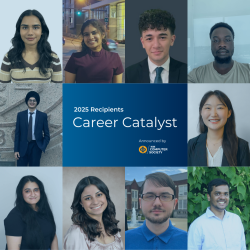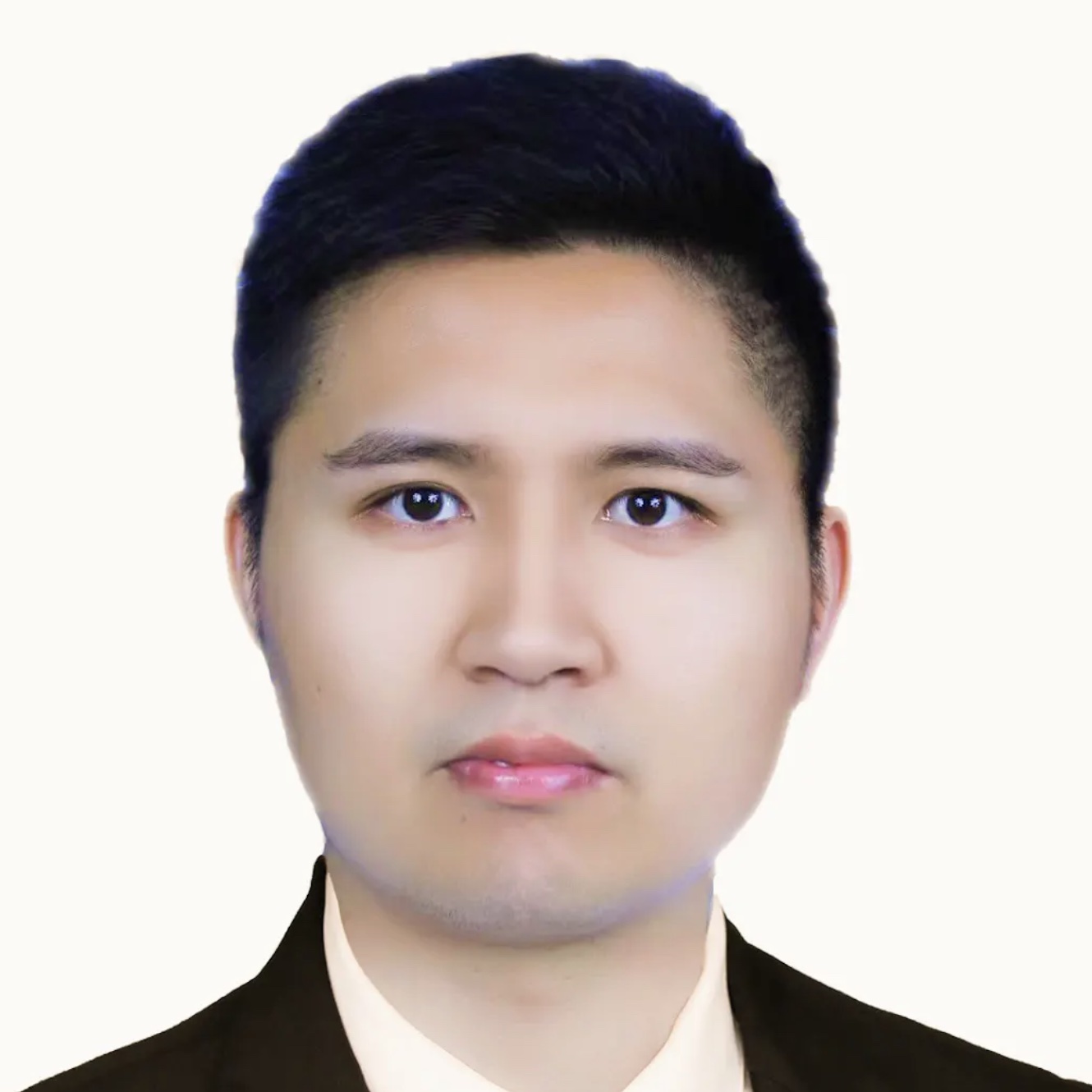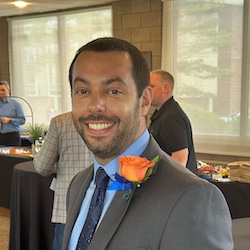Computing’s Top 30: Dwith Chenna

For Dwith Chenna, actively engaging with professional organizations isn’t an obligation, it’s enlightened self-interest.
Through this work with IEEE Computer Society and other organizations, he regularly connects with and learns from other professionals that he’d never encounter in daily life; through his work with conferences and publications, he engages with the latest research in his field, which feeds his own cutting-edge interests in creating solutions in computer vision, deep learning, and Edge AI.
Chenna, an MTS product development engineer in AI inference at AMD, was named Industry Rising Star 2024 by the IEEE Computer Society Santa Clara Valley Chapter and one of Computing’s Top 30 Early Career Professionals for 2024.
In the Q&A that follows, Chenna discusses his passion for his research and development, and how his contributions to the profession feed this work and his drive. Specifically, he describes
- How being named an IEEE Rising Star had three key impacts on his career
- The practical benefits of his work using fix-point arithmetic to implement CNNs on digital signal processors
- The ways in which his various IEEE affiliations have enriched both his professional and personal lives
- The three-pronged strategy he uses in his editorial work to ensure quality, technical accuracy, and an environment that encourages innovation and dialogue
- The key themes he emphasizes in his invited talks, which aim for clear, actionable, research-driven messages
You were named the Industry Rising Star by the IEEE Computer Society Santa Clara Valley Chapter in 2024. What do you believe contributed to this recognition, and how has it impacted your career?
I am deeply honored to have been recognized as the Industry Rising Star by the IEEE Computer Society Santa Clara Valley Chapter in 2024. Several factors contributed to this recognition:
Innovative projects and technical expertise. Over the past several years, I have dedicated myself to developing state-of-the-art solutions in computer vision, embedded algorithms, and efficient AI/ML deployment. At AMD, I use my technical expertise to develop comprehensive onboarding resources, such as use cases, tutorials, and methodology documents, which facilitate the seamless adoption of AI solutions across various platforms. This holistic approach ensures successful implementation and fosters innovation within the industry. Additionally, my work on the fixed-point implementation of convolutional neural networks on digital signal processors has helped in developing tools that enhance the performance and accuracy of AI inference on resource-constrained hardware. Building strong, cross-functional teams has been essential to my success. By fostering an environment of collaboration and open communication, I’ve been able to harness diverse perspectives, leading to more robust and innovative solutions. Additionally, mentoring junior team members has not only contributed to their growth but also reinforced a culture of excellence within the organization.
Leading initiatives like these has allowed me to push the boundaries of what is possible in Edge AI and computer vision. My efforts have resulted in publications, including white papers like Edge AI: Quantization as the Key to On-Device Smartness and Evolution of Convolutional Neural Network (CNN) Compute vs Memory Bandwidth for Edge AI.
These works feature technical insights that are useful to the engineers and developers working in the field and to the technical community as a whole. Moreover, my commitment to optimizing AI/ML deployment is evident in projects. While working at Magic Leap on cutting-edge augmented reality glasses, the great work done by our team was recognized, including by the Edge AI Innovation Award at the Embedded Vision Summit 2024.
Commitment to continuous learning. Staying abreast of the latest technological advancements has been pivotal. I actively engage in professional development through speaking sessions in conferences/summits and contributing to open-source communities. This dedication has enabled me to integrate novel technologies and best practices into my work, enhancing both quality and efficiency. Participating in IEEE conferences, publishing papers, and speaking at industry events have allowed me to share insights and contribute to the broader tech community. These activities have not only elevated my professional profile but also facilitated valuable connections and collaborations.
My focus on cutting-edge projects, combined with a strong foundation in research and development, has been instrumental in driving my technical advancement in efficient AI and computer vision, ultimately contributing to my recognition as an Industry Rising Star.
The award’s impact. Receiving this recognition has had a profound impact on my career in several ways:
- Enhanced visibility. Being acknowledged by a prestigious organization like IEEE has increased my visibility within the industry, opening doors to new opportunities and collaborations with leading experts. The accolade has bolstered my confidence and motivation to take on more challenging projects, pursue leadership roles, and continue pushing the envelope in my field.
- Leadership. With recognition comes trust. I’ve been entrusted with more significant leadership responsibilities, allowing me to make a more substantial impact within my organization and the industry at large.
- Networking opportunities. Connections made through IEEE and related events have been invaluable, providing a support network of peers and mentors who inspire and guide me in my professional journey.
Overall, being named the Industry Rising Star has been a pivotal milestone in my career, validating my efforts and inspiring me to continue striving for excellence and innovation in the tech industry.
As a Senior Member of IEEE since 2023 and Technical Program Committee for IEEE conferences, how do you stay engaged with the IEEE community, and what value do you find in these professional affiliations?
As a Senior Member of IEEE since 2023 and an active member of various Technical Program Committees for IEEE conferences, I maintain a deep and ongoing engagement with the IEEE community through multiple avenues. My commitment to IEEE involves active participation in technical committees, peer-reviewing, advisory roles, and contributing to the organization’s initiatives. This engagement not only allows me to contribute meaningfully to the field of computer vision and Edge AI but also fosters my professional growth and keeps me at the forefront of technological advancements.
Serving on the Technical Program Committees for prestigious IEEE conferences such as the International Conference on Computer and Applications and the IEEE Conference on Artificial Intelligence has been instrumental in my engagement with the IEEE community. In these roles, as reviewer, I evaluate cutting-edge research submissions, and highlight innovative developments in computer vision, deep learning, and Edge AI. This involvement ensures that I am consistently exposed to the latest research trends and methodologies, allowing me to integrate new insights into my own work at AMD. In addition, as a dedicated peer reviewer for numerous IEEE publications and conferences, including the IEEE International Workshop on Machine Learning for Signal Processing and SPIE AR/VR/MR conferences, I contribute to maintaining the high standards of scholarly communication within the community. Reviewing papers not only allows me to provide constructive feedback to fellow researchers but also keeps me abreast of emerging technologies and novel approaches in my areas of expertise. This continuous interaction with a broad spectrum of research enhances my ability to identify and implement best practices in my projects.
Advisory roles and bridging academia and industry. As an IEEE Spectrum Advisory Board Member, I play a crucial role in shaping the content and strategic direction of one of IEEE’s most influential publications. My responsibilities include participating in editorial planning sessions, contributing to the development of special issues, and providing insights on the latest research trends. By attending and leading workshops and technical discussions, I help advance collective knowledge and address critical challenges within these fields. This role not only allows me to influence the dissemination of cutting-edge information but also fosters a collaborative environment where industry leaders and researchers can exchange ideas and drive innovation forward.
In addition to my advisory role with IEEE Spectrum, I serve as an advisor and judge for the Annual IEEE Standards Association Telehealth Pitch Competition. This position involves evaluating innovative telehealth solutions that enhance healthcare delivery and patient outcomes. As a judge, I assess submissions for their technical excellence, practical feasibility, and potential impact on the telehealth industry. My feedback helps participants refine their projects, ensuring that the most promising ideas receive the support and recognition they deserve. This involvement not only promotes the adoption of advanced AI solutions in telehealth but also fosters meaningful collaborations between academia and industry, driving technological advancements that address pressing healthcare needs.
Value derived from IEEE professional affiliations. The value I find in my IEEE affiliations is both professional and personal. IEEE provides unparalleled access to a global network of experts, enabling collaborations that drive innovation and facilitate the exchange of ideas. The continuous learning opportunities available through conferences, webinars, and IEEE publications ensure that I remain well informed about the latest technological advancements and research breakthroughs. This knowledge is essential for maintaining a competitive edge in my work at AMD, where I develop and optimize AI solutions for deployment on advanced hardware platforms like AI accelerators.
Moreover, being part of the IEEE community instills a sense of belonging and shared purpose. Engaging with peers through forums, working groups, and collaborative projects not only inspires creative problem-solving but also encourages the exchange of diverse perspectives. This collaborative environment is instrumental in advancing my research and professional initiatives, enabling me to contribute to and benefit from collective expertise.
Lastly, my involvement with IEEE aligns with my commitment to mentoring the next generation of engineers and researchers. By participating in IEEE’s educational initiatives and providing guidance through my advisory roles, I help cultivate talent and inspire others to pursue excellence in the fields of computer vision and AI.
Your multiple roles as a Consumer Advisor Board member and AI ambassador at the AI Accelerator Institute involve providing insights into AI advancements. Can you share a recent project or initiative you advised on and its impact on the industry?
In my roles at the AI Accelerator Institute, I recently had the opportunity to advise the community on optimizing AI inference performance for hardware accelerators and expanding the practical use of Edge AI. This effort culminated in two technical blog articles that I contributed:
- “Improving AI Inference Performance with Hardware Accelerators.” In this piece, I detailed how leveraging specialized hardware can drastically reduce latency and boost throughput for AI models. I detailed and explored best practices in algorithm optimization, showcasing how tailored hardware solutions deliver efficient computation without compromising on accuracy. This article has not only enhanced understanding of performance bottlenecks but also provided engineers and developers with actionable insights to integrate these advancements in their own projects.
- “AI Inference in Edge Computing: Benefits and Use Cases.” Here, I delved into the practical benefits Edge AI brings to various application domains. The blog highlighted successful implementations, discussed deployment challenges, and outlined future directions for enabling intelligent processing directly on edge devices. The blog has been useful in providing insights into bridging the gap between theoretical research and industry application, fostering a broader adoption of robust edge computing solutions.
Both articles have initiated ongoing technical discussions in the community, enabling insights that are crucial for projects between academia and industry. By providing a detailed technical understanding of how hardware accelerators and Edge AI can be harnessed to achieve superior performance, these contributions play an important role in driving innovation and practical advancements within the field of AI.
Your editorial roles at IEEE SCV’s FeedForward magazine and</em IEEE Spectrum involve shaping the content and direction of these publications. How do you approach this responsibility, and what topics do you prioritize?
In my editorial roles at FeedForward and IEEE Spectrum, I approach this responsibility with a focus on maintaining high standards of content quality, ensuring technical accuracy, and fostering an environment that encourages innovation and critical dialogue in the fields of computer science and engineering. My strategy involves three key aspects:
- Curating cutting-edge content. I prioritize topics that reflect the latest advancements and emerging trends in areas such as Edge AI, medical imaging, deep learning, and AI in telehealth. By identifying novel research breakthroughs and technological innovations, I ensure that our publications remain at the forefront of industry discussions. I actively seek out contributions that not only present technical depth but also translate complex ideas into insights that are accessible and impactful for a broad audience of professionals and academics.
- Fostering cross-disciplinary dialogue. Recognizing the interconnected nature of today’s technological landscape, I emphasize content that bridges the gap between different domains. This includes pieces that explore the intersection of AI with hardware accelerators, cybersecurity, and application areas like telehealth and AR/VR. By highlighting interdisciplinary research and collaborative projects, I help create a platform that encourages innovation and nurtures partnerships between academia and industry.
- Ensuring relevance and real-world impact. I focus on topics that have tangible implications for both research and industry application. Whether it’s through in-depth technical analyses, case studies, or thought leadership articles that examine the broader implications of emerging technologies, I aim to provide our readers with actionable insights. This includes prioritizing discussions around practical challenges and solutions in deploying AI/ML models in real-world scenarios, ensuring that the content not only informs but also inspires progress and innovation.
In essence, my editorial approach is about balancing visionary research with actionable insights, thereby shaping content that is both inspiring and pragmatically relevant. This commitment helps position FeedForward and IEEE Spectrum as critical resources for professionals seeking to navigate and contribute to the rapidly evolving landscape of computer science and engineering.
As an ORISE Research Fellow at the FDA, you worked on developing mass fever screening systems. Can you discuss the challenges and successes of this project, especially in the context of public health?
The project on mass fever screening systems aimed to enhance public health safety by implementing reliable non-contact vital signal detection methods. This work was particularly critical during global health emergencies, such as the COVID-19 pandemic, where rapid and accurate fever screening became paramount.
One of the major challenges we encountered was achieving the level of precision required for temperature measurement using non-contact methods. Integrating thermal and visual imaging presented its own set of hurdles, as differences in sensor resolution and image quality often led to misalignment issues. To overcome this, I developed a multi-modal image registration algorithm that employed a novel coarse-fine registration strategy. The process began with a mutual information-based rigid transformation to establish a broad alignment, followed by a normalized cross-correlation-based non-rigid transformation to capture finer details. This innovative strategy ensured high registration accuracy, which is critical for precise temperature measurements.
Another significant challenge was handling the variability in real-life conditions. Factors such as ambient lighting, varying facial expressions, and differences in camera quality required robust algorithmic solutions capable of performing under diverse conditions typical in mass screening environments. We rigorously validated our algorithms using real-life datasets collected at the University of Maryland Medical Center to ensure reliability and effectiveness in practical applications.
On the successes front, our research made significant strides in automating the fever screening process. By seamlessly blending thermal and visual images, we were able to automate the detection process, thereby increasing both the speed and accuracy of temperature measurements. This innovation not only improved operational efficiency during mass screenings but also reduced human error, a crucial aspect in high-stakes public health environments.
Additionally, building on the advancements made in fever screening, I extended my research to explore an imaging photoplethysmography (IPPG)-based heart rate measurement technique. By analyzing RGB videos captured from commercial cameras, we were able to identify optimal facial regions, such as the forehead and cheeks, that provided more reliable data for heart rate evaluation. Our findings offered critical insights into how various input parameters—resolution, frame rate, and lighting conditions—affect the performance of non-contact vital sign monitoring systems.
The impact of this work has been significant. Our methodologies have been widely published and cited, contributing to the broader scientific discourse on non-contact health monitoring. For example, the temperature data extracted through our research was recently published on PhysioNet under “Facial and Oral Temperature Data from a Large Set of Human Subject Volunteers,” providing a valuable resource for further research and validation. Moreover, our published studies, such as “Free-Form Deformation Approach for Registration of Visible and Infrared Facial Images in Fever Screening” and “Multi-Modality Image Registration for Effective Thermographic Fever Screening,” have influenced subsequent research and have been applied to enhance screening protocols worldwide.
In summary, working on the FDA project was both challenging and rewarding. Overcoming the technical hurdles associated with multi-modal image registration and algorithm optimization provided valuable lessons in signal processing and computer vision. Ultimately, these innovations have contributed to more efficient and accurate mass fever screening systems, which play a vital role in protecting public health during pandemics and other health crises.
You have been an invited speaker at several prestigious events, including the Embedded Vision Summit 2023-2025 and Invited Speaker at ACM Bay Area. What are some of the key messages you aim to convey in your talks, and how do you engage your audience?
Across my invited talks at high-profile events such as the Embedded Vision Summit and ACM Bay Area, I aim to deliver clear, actionable, and research-driven messages that resonate with both academic and industry audiences. Here are some of the key themes I emphasize and the approaches I use to engage my audience:
Quantization techniques. I focus on demystifying complex quantization methods—whether it’s post-training quantization (PTQ) for large language models or a deep dive into CNN quantization for embedded vision applications. For example, in my talks on “Quantization Techniques for Efficient Deployment of Large Language Models” at Embedded Vision Summit 2025 and “Efficient LLM Deployment at the Edge Through Quantization” at ACM Bay Area, I explain techniques such as gradient post-training quantization (GPTQ), activation-aware weight quantization (AWQ), and SmoothQuant in an accessible manner. My goal is to empower engineers to understand the trade-offs between computational efficiency and model accuracy, equipping them with practical insights they can apply in their work.
Best practices, tools, and real-world recipes. I emphasize the importance of a practical, hands-on approach. Whether discussing “DNN Quantization: Theory to Practice” or “Practical Approaches to DNN Quantization,” I share concrete best practices, tools, and recipes that help optimize deep neural networks while minimizing accuracy loss. By detailing step-by-step methods and showcasing case studies from real-world deployments—such as using open-source models like Llama, OPT, or Mistral—I provide the audience with actionable frameworks that bridge the gap between theory and practice.
Quantization as a catalyst for edge computing innovations. A recurring message is that quantization represents a pivotal technology for enabling AI applications in resource-constrained environments. I highlight how reducing model size and computational demands can drive down operational costs, decrease environmental impact, and enhance data privacy. This message is crucial, particularly when addressing the scalability challenges inherent in deploying large language models at the edge. My presentations underscore the role of cutting-edge quantization methods in transforming AI from high-performance research to ubiquitous, real-world applications.
Interactive engagement and real-time demonstrations. To ensure my audience remains engaged, I incorporate interactive elements in my presentations. I frequently use real-time demonstrations and case studies to illustrate the tangible benefits of quantization. Whether it’s through live coding sessions showcasing quantization pipelines or interactive Q&A segments, I ensure that the audience not only grasps the technical details but also sees the direct impact of these methods on performance and efficiency. This hands-on approach fosters a collaborative learning environment and encourages knowledge exchange among professionals.
Future trends and open challenges. In every talk, I also look ahead to emerging trends and open challenges in the field. I discuss the evolving landscape of AI hardware, the implications of new quantization strategies, and the role of community-driven development in shaping future innovations. This forward-looking perspective helps inspire industry professionals and researchers to continue exploring and pushing the boundaries of what’s possible in embedded AI and deep learning model deployment.
In summary, my talks are designed to provide a comprehensive view of quantization techniques—from theory to real-world application—while engaging the audience through clear explanations, practical insights, and interactive demonstrations. By connecting complex concepts with tangible industry benefits, I aim to empower professionals to tackle both current challenges and future opportunities in efficient AI deployment.
Reflecting on your diverse experiences, from your education at the University of Maryland and NIT Warangal to your roles at AMD, Magic Leap, and Cadence, what are some key lessons you have learned, and how have they shaped your approach to innovation and leadership?
Reflecting on my journey, I’ve learned several key lessons that have profoundly shaped my approach to both innovation and leadership.
First, I’ve discovered that a strong foundation in research and development is essential. My early work on advanced video codec architectures and parallel implementations of face recognition taught me to blend theoretical knowledge with practical applications. This background not only prepared me for developing critical innovations, such as our non-contact fever screening algorithms during my graduate studies at Maryland, but it also instilled a mindset for lifelong learning and problem-solving.
Second, the importance of interdisciplinary collaboration became evident early in my career. Working on projects that spanned computer vision, deep learning, and embedded systems—whether at Cadence or Magic Leap—highlighted that combining expertise from software development, algorithm design, and hardware engineering is crucial. This holistic view allows me to develop efficient, deployable AI solutions that truly address real-world constraints without compromising performance.
Third, the value of leadership through mentorship and clear communication has been pivotal. Through my roles in IEEE activities or my contributions as an advisor and technical committee member, I’ve learned that sharing knowledge not only drives innovation but also fosters a culture of innovation across organizations and communities. Presenting at prestigious venues, like the Embedded Vision Summit, has taught me to distill complex ideas into actionable insights, ensuring both technical teams and broader audiences can advance together.
Finally, my experiences have reinforced that resilience and adaptability are essential in today’s rapidly evolving technological landscape. Each role—from developing efficient kernels for NNAPI enabling millions of mobile devices at Cadence, to optimizing AI models for AR glasses at Magic Leap, to now enabling AI inference solutions at the edge through AMD—has presented unique challenges. Embracing these challenges has honed my ability to pivot, innovate, and lead with foresight, ensuring solutions that not only push the boundaries of current technology but are also sustainable and future-oriented.
In summary, my diverse experiences have taught me that innovation is best achieved through continuous learning, interdisciplinary teamwork, effective leadership, and a resilient approach to overcoming challenges. These lessons continue to drive my passion for developing cutting-edge solutions that have a tangible impact on both industry and society.
Bio: Dwith Chenna
Dwith Chenna is an accomplished researcher and developer specializing in algorithm development and optimization in computer vision, deep learning, and Edge AI. With more than a decade of experience, he has made significant contributions to advancing AI inference on resource-constrained hardware accelerators. In his current role at AMD, Dwith drives the adoption of AMD’s machine learning inference solutions, working closely with developers and collaborating with sales, marketing, and R&D teams to enable the seamless deployment of AI models on AMD’s CPUs, NPUs, and embedded devices. His expertise in evaluating embedded AI algorithms for performance and accuracy—coupled with his efforts in developing onboarding resources such as use cases, tutorials, and methodology documents—has played a critical role in ensuring successful AI deployments.
Dwith’s contributions to the field have earned him prestigious accolades, including the IEEE CS Computing’s Top 30 Early Career Professionals award and the IEEE Rising Star 2024 recognition from IEEE CS Silicon Valley. His dedication to the IEEE community spans more than a decade, from his early involvement as a student member and young professional to now being an IEEE Senior Member. He actively participates in IEEE initiatives, shaping discussions on medical imaging, computer vision, deep learning, and Edge AI as a technical committee member and reviewer for leading conferences. Beyond his professional career, Dwith is a prolific and published researcher with a commitment to advancing knowledge in image processing, computer vision, AI, and computing.
Dig Deeper
To learn more about Chenna’s work and research,
- See a list of his publications on Google Scholar
- Read his IEEE Rising Star 2024 announcement
- Connect with him on LinkedIn
To read more about how IEEE Computer Society supports our world and its innovative thinkers through funding, education, and activities, check out IEEE CS contributions to the computing community.
Each week over the next few months, Tech News will highlight different Top 30 honorees. For a full list, see Computing’s Top 30 Early Career Professionals for 2024.
In addition to Computing’s Top 30, IEEE Computer Society offers many other awards; to read
about the honors and the honorees—and perhaps nominate an impactful professional in your life—visit the IEEE CS Awards page.









